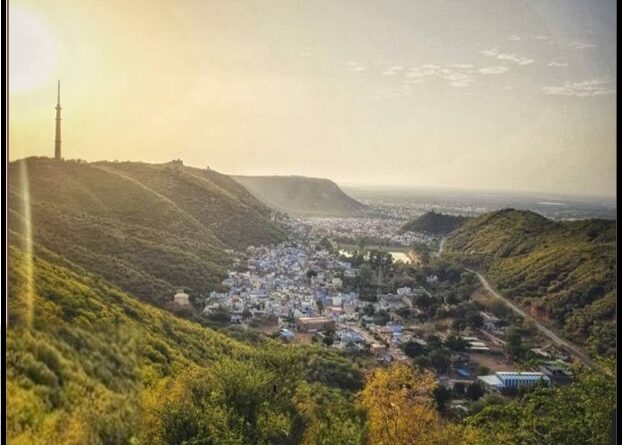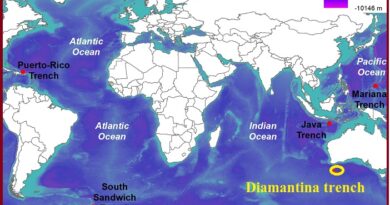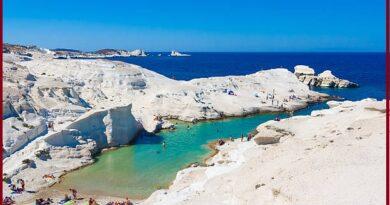Geoheritage site The Great Boundary Fault at Satur (Reverse fault), Bundi district, Rajasthan

Great Boundary Fault at Satur, Bundi district in Rajasthan is represents a zone of disruption constituted by a number of parallel and oblique faults resulting in a step-like feature. Deformed limestone at the site is worth viewing. The Great Boundary Fault is best studied at about 10 km NW of Bundi on Jaipur Road.
Geology
Geologically the area consists of diverse rock types belonging to the oldest Archean metamorphites of the Bhilwara Supergroup and the Upper Proterozoic sedimentaries of the Vindhyan Supergroup. NE-SW part of the district is exposed by the rock types belonging to Bhilwara Supergroup and in the remaining part rock types of the Vindhyan Supergroup exist.
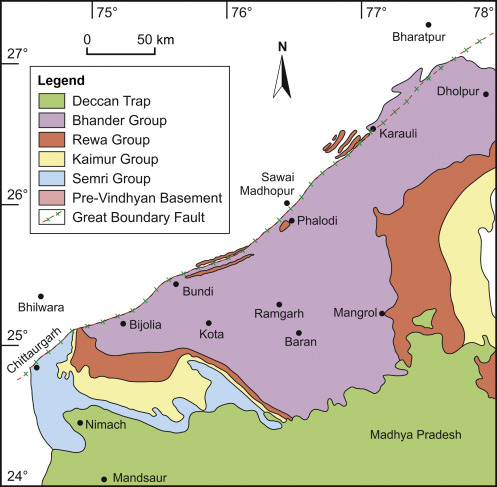
Vindhyan sedimentary sequences have occupied the northeastern to the southern part of the Bundi district. These are grouped as upper Vindhyan Supergroup and separated from Bhilwara Supergroup by a major reverse fault known as great boundary fault. All the three Kaimur, Rewa & Bhander Groups with their formations & members are well exposed.
Also read- The Eparchaean Unconformity, in India that missed 500 Million years time gap-Geo heritage site
Rocks of Kaimur Group occur as an outlier on the NW of Great Boundary fault in between the Bundi Indergarh area. Rewa Group comprises Panna shales, Indergarh (Lower Rewa) sandstone, Jhiri shale, and Ganurgarh (Upper Rewa) sandstone formations.
Great boundary Fault
The Great Boundary Fault is a major tectonic lineament in northwestern India that runs close to the contact between the Vindhyan sedimentary rocks (ca. 1400-600 Ma) and the Aravalli supergroup. In Chittaurgarh, an area the Vindhyan sedimentary rocks occurring on the footwall sideshow well-developed fault zones and fault-related deformation zone, and the Berach granite (ca. 2500 Ma), occurring on the hangingwall side, does not bear any significant imprints of the fault-related deformation.
The nature of the fault rocks within the Great Boundary Fault Zone is highly variable. Both cataclasite and mylonite are commonly developed in the relatively competent lithounit caught up within the fault zone. Fault breccia is relatively less common.
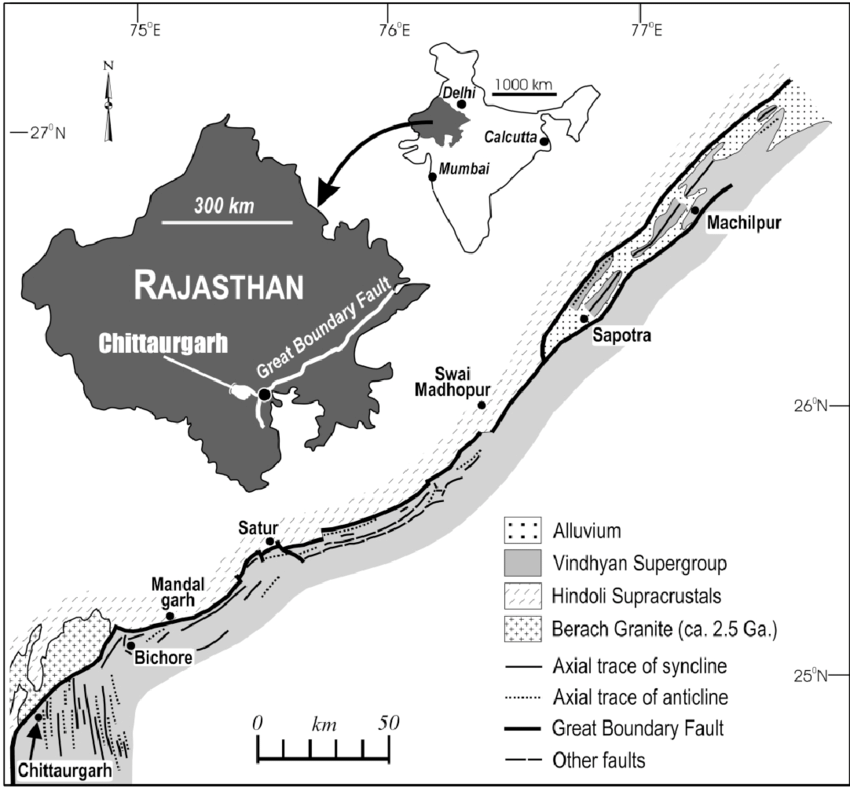
The breccia/cataclasite and the mylonite have developed in alternate cycles, and the brittle deformation has acted as the precursor to the ductile deformation, and the Great Boundary Fault Zone has, in general, developed in a brittle-ductile transitional zone. It is concluded that the Great Boundary Fault zone has a characteristic deformation style, which is defined by the development of ductile shear zones.
Both the basement and the Vindhyan sediments occurring on the hanging wall side of the fault have been folded into large-scale low plunging folds trending parallel to the GBF. An increase in tightness and asymmetry of the folds near the fault suggest that these are fault-related folds.
